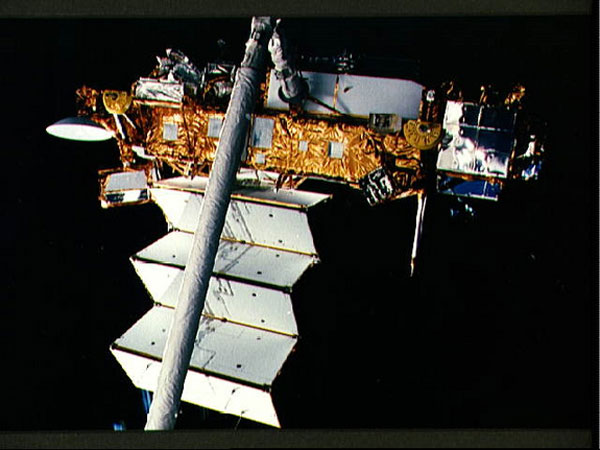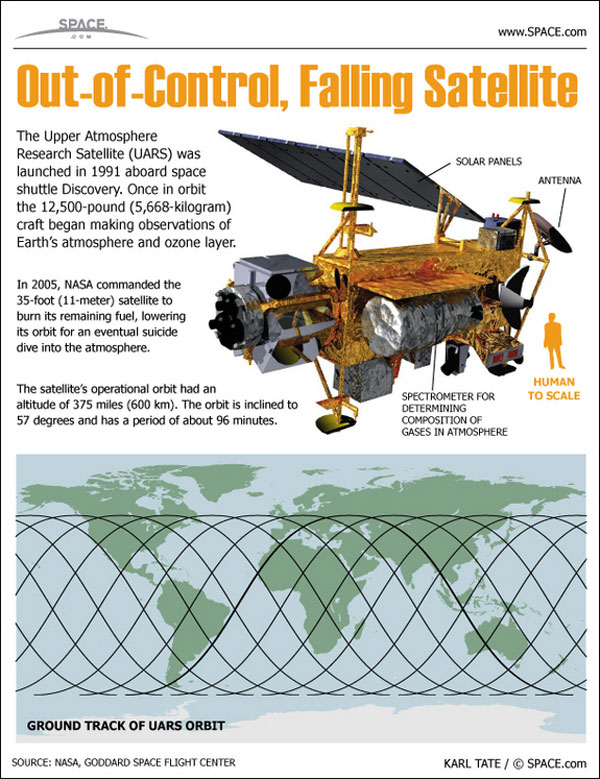Upper Atmosphere Research Satellite to fall back to Earth Friday after 20-years in orbit
Back in 1992, NASA crammed the gigantic bus-sized Upper Atmosphere Research Satellite (UARS) into the cargo bay of the Space Shuttle Discovery on mission STS-48. The UARS weighs in at 6.5 tons and was used to study the atmosphere to determine the chemical compounds in the upper atmosphere and how they contribute to the climate around the globe. The satellite was decommissioned back in 2005 and NASA ordered the satellite to fire its thrusters and put the UARS on path to plummet to a fiery death on its descent into the atmosphere.
The satellite has been orbiting closer and closer to the Earth for years now and has done so faster than NASA predicted. The satellite was originally expected to enter the atmosphere in late September or early October. NASA now expects that the UARS will enter the atmosphere and begin burning on September 23, which is this Friday. Anyone that happens to be in the path of the descent will see a serious light show as the massive craft burns. Oddly, NASA doesn't know exactly where the UARS will land.
It seems that 26 large pieces of the satellite will survive reentry and hit the surface. Where those pieces will fall is completely unknown. There is a chance, however remote, that people on the ground could be hit by the debris. The chances of the debris hitting a person are 1-in-3200. Those are some pretty high odds if you think about it. You are much more likely to be hit by a chunk of this debris than you are to win the lottery. Chances are that the debris will hit an uninhabited part of land or the ocean. The predicted landing zone covers parts of Northern Canada to southern South America.
[via Space.com]


